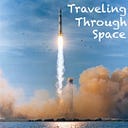Chapter 6: Inquisitions & Two Societies
A recurring theme in this series is the role of society in nurturing advancements to science. A prime example is perhaps from Galileo’s time in two cities of Italy, Venice and Florence. Venice was far from conservative Roman control, specifically from the Holy Roman Church. It had a merchant base, where people with different backgrounds lived, exchanged ideas and debated them with an open mind. Most importantly, the wealthy sponsored science experiments.
This is where Galileo had intellectual and scientific freedom. It is said that his lectures were widely attended, not only by his students, but also other intellectuals traveling through the region. His famous experiments included finding out isochrony of pendulums, i.e. the period depends only on the length of the pendulum and not the weight of the bob. This he did by measuring time with his own heartbeat.
The significant improvements he was able to make to the telescope allowed him to observe heavenly bodies for the first time in human history. He was not only looking beyond what most of humanity had ever seem, but he had the curiosity, the mental capability, the genius, to look beyond the common knowledge. But he was in search of more prominent patronage that would allow him to concentrate solely on conducting his research, instead of teaching.
Shortly after discovering the moons of Jupiter, Galileo moved to Florence in 1610 under the patronage of a powerful family — the Medici’s. What he didn’t realize, perhaps in the beginning, was that he also moved closer to the religious center. When his ideas started to contradict those accepted by the Church, the persecutions really began.
There were two main challenges he presented to the Church’s position. First, he found imperfections in heavenly bodies like the Moon, which he documented using his telescope. What he saw was a surface riddled with craters and at odds with the idea of heavenly perfection supported by the Church. Second, he purported that the Sun is at the center of our solar system. For centuries, Aristotle’s model placing the Earth at the center was universally accepted and supported by the Church. So, the theory of Heliocentrism developed by Copernicus, and now championed by Galileo, was again at odds with church-approved teachings.
The fundamental challenge presented to Heliocentrism was the lack of evidence for Earth’s motion. Galileo simply pointed out that since we are part of Earth’s motion, we cannot detect it. Armed with a powerful telescope, Galileo was able to show that Venus has phases, like our Moon, and hence should revolve around the Sun. This directly challenged humanity’s hubris of placing itself at the center of the Universe. This meant that the Cosmos is bigger than what our minds can understand and that we are a part of it. Lesser minds feared such a conclusion.
In the beginning, Galileo expected people to come with an open mind, and so he wanted to better explain his ideas and to debate the merits of the Heliocentric model vs. the Geocentric model. His writing at the time, including letters to Church, were meant to demonstrate evolution of thought and reasoning. But he was not dealing with a “just” society. Rather, it was a society that was not interested in debate, a society that didn’t want to learn, a society that was happy with group thinking, a society that was willingly supporting and accepting Inquisitions on any ideas contradicting its dogma.
In one society, he was recognized, supported, celebrated and sought after. The pace of his scientific contribution during this time was tremendous. In the other, he was attacked, vilified and punished, all for having a different thought, by men guided by an ideology of fixed interpretation of the world. Usually people who are too sure of themselves cause the most damage to people around them.
Eventually, in 1633, he was tried, convicted and put into house arrest for the remainder of his days. He was made to recant all his theories on Heliocentrism and Earth moving around the Sun. In the end, all he could mumble was “Eppur si muove (and yet it moves).” As a society we extinguished the brightest star that had ever shown amongst us!
Galileo was a father of observational astronomy, physics, the scientific method and modern science. He was a constant inventor — thermostat, military compasses, hydrostatic balance, and improved telescopes are just some of his inventions. He labored to understand matter and its motion through different mediums. Throughout his life, Galileo applied the scientific method to reach verifiable conclusions. He created experiments to test his hypothesis, made observations and published his findings for public debate.
In his final book, the Two New Sciences, written under house arrest and published in Holland, Galileo built upon his previous work in physics. In the end, by 1637, Galileo began to lose his eye sight and was denied any special medical attention. He eventually died in 1642.
It was Eugene O’Neill who said, “There is no present or future, only the past happening over and over again — now.” The fate of Galileo was sealed not by one person, but by a society.
So what is left to do now but to learn from that history and do better!
